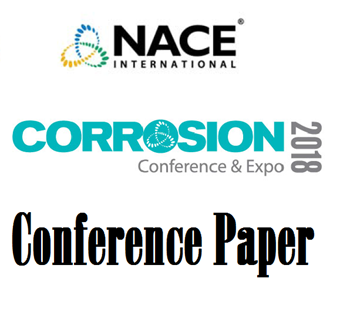This paper discusses the detailed inspection, testing, metallurgical analysis and supporting factors from which the most likely cause of pitting corrosion was revealed in the DSS flowline welds.
Product Number:
51318-11022-SG
Author:
Mushaid Nauman, Mohammed Rashid
Publication Date:
2018
$0.00
$20.00
$20.00
Pipelines are the veins of the Oil and Gas industry, a fixed asset with large capital costs and backbone for precious petroleum transportation. Precious as it is scarce and hard to find on the Earth’s surface that’s why it was called black gold years ago. Though, at first sight pipelines are less fascinating than the humongous offshore platforms and floating production systems. The fact with pipelines being the vena cava of the petroleum transfer body is that it consumes little energy for transportation as compared to oil tankers. Among the pipeline materials, carbon steel is the most preferable choice for contractors and owners as being economical, durable and environmental friendly. However, it requires a bulk of operations for its smooth running. To cut through the hectic operational and maintenance work, duplex stainless steel (DSS) line pipes are also used for corrosive fluid transport. These line pipes are joined by welding which needs special controls to achieve the required quality. Failing to control welding correctly can result, in the worst case, catastrophic failure and loss of life.
The DSS pipeline under consideration has been used in flowlines for various wet gas production and reservoir wells since 1984 in Middle East by the client. Initially, the DSS line pipe material was installed at one well and was in service for two years, this was made redundant later. In 2004, the material was reused as another production flowline and was in service for six months. Later, it was again made redundant. The DSS flow line was used for high chloride and moderate CO2/H2S containing gas service. The chloride content within the stream was 2000 ppm, H2S 100 ppm and 4 mol% CO2. The operating temperature for the stream was recorded as high as 66 C. The client recovered the same pipe material in 2016 to construct another flowline. As part of this task, radiography tests on 26 girth welds were performed. Seven of these girth welds were identified with internal corrosion and pitting corrosion close to the heat affected zone (HAZ). However, no defects or flaws were identified on the parent material. This paper discusses the detailed inspection, testing, metallurgical analysis and supporting factors from which the most likely cause of pitting corrosion was revealed in the DSS flowline welds.
Key Words: Duplex Stainless Steel (DSS), Heat Affected Zone (HAZ), Stainless Steel (SS), Carbon dioxide (CO2), Hydrogen Sulphide (H2S), parts per million (ppm)




